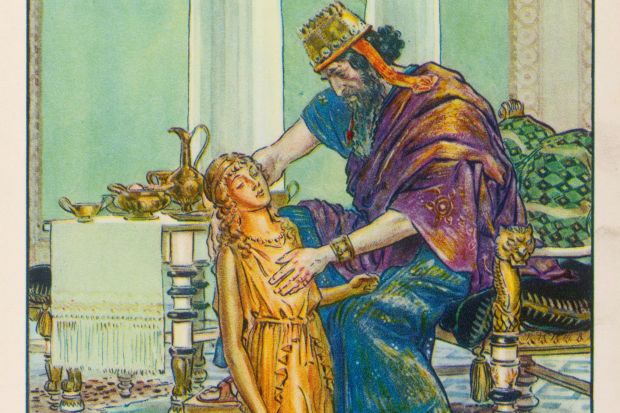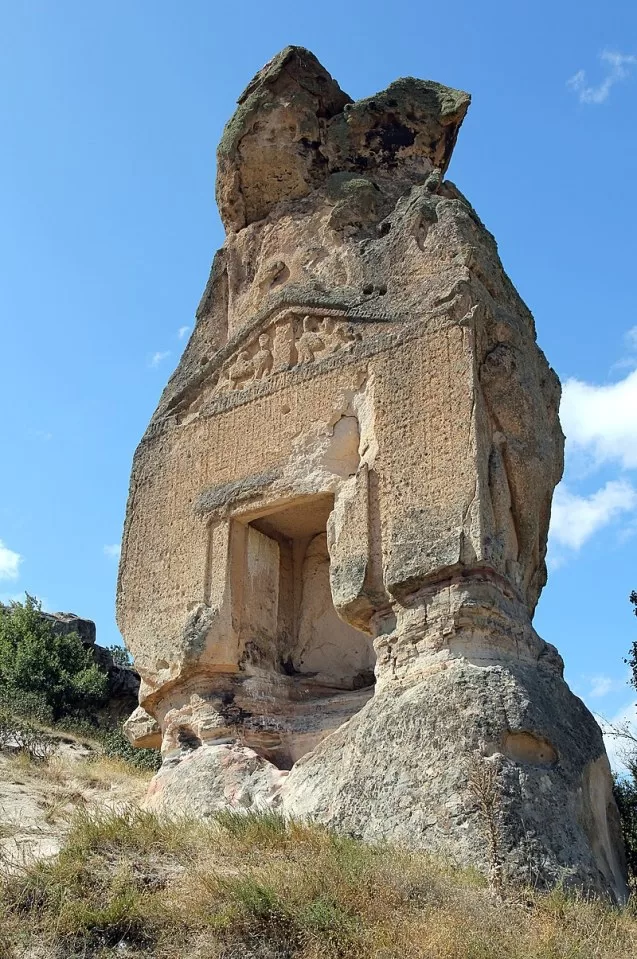A MYSTERIOUS message carved into a statue forged by King Midas has been read for the first time in more than two millennia.
A historian managed to decipher it during a visit to what today is southern Turkey, where he snapped a one-in-a-million photo that revealed details never seen before.
Mark Munn discovered that the 2,600-year-old stone monument, known as Arslan Kaya, features the word “Materan,” which translates to “mother goddess” in ancient Indo-European.
This message was created by the Phrygians, a civilisation that inhabited the region from approximately 1200 to 600 BC and is best known for their legendary King Midas, famed for his golden touch.
The 52-foot-tall monument, carved to resemble a building façade, is adorned with images of lions, sphinxes, and the figure of the mother goddess standing in a doorway beneath the inscription.
Arslan Kaya is one of eight similar structures in the Phrygian Highlands, a quiet region in western Anatolia, Turkey that is now home to a few villagers and remnants of an ancient kingdom.
They are thought to be shrines or temples dedicated to the mother goddess, Cybele, the most revered deity in the Phrygians’ polytheistic religion.
Munn, a professor of Ancient Greek History and Archaeology at Pennsylvania State University, told Newsweek: “The Phrygian Mother is considered to be a powerful goddess ruling the natural world.”
Munn made a key discovery during his first visit to Arslan Kaya in April.
Favourable lighting conditions allowed him to take the incredible photo of the worn inscription, revealing details that had eluded previous researchers.
“If the light is not right, these traces cannot be distinguished from cracks in the rock,” Munn explained.
Comparing his photos to earlier ones from the 1890s and 1950s, he confirmed that “the name of the Mother—‘Materan’—can definitely be read in the centre of the inscription.”
While other letters could be partially read, they were insufficient to form complete words.
Munn also elaborated on the grammatical structure of the inscription.
He noted that “the word ‘Materan’ is the accusative form of ‘Mater,’ which means it is likely the object of a phrase or sentence following what may be a verb.”
He speculated that, like better-preserved Phrygian inscriptions, this one may have recorded the name of the person who created or dedicated Arslan Kaya to the goddess.
“The name of the Phrygian Mother can be read on at least two of the other great Phrygian facades, but Arslan Kaya is the only one where her name and her image were both carved,” he added.
Based on the style of the carvings, Munn confirmed the monument dates to the early or mid-6th century BC.
He said: “I did not expect to discover anything new, only to see this monument, which is very worn and had been badly damaged by treasure seekers, before it was further damaged or destroyed.”
When the monument was first documented in the 1880s, the inscription was already badly worn.
But Munn noted: “I was luckily able to see certain details that had not been seen or accurately reported before.”
Though previous scholars had suggested the word Materan might be part of the inscription, others concluded it was illegible.
Munn’s detailed analysis has resolved this debate, confirming that Arslan Kaya was created in honour of the Phrygian mother goddess.
“With my photographs, and comparing them to the best photographs taken by earlier visitors, I could confirm the reading,” he said.
Who was King Midas?

KING Midas is a figure from ancient mythology, best known for his legendary ability to turn everything he touched into gold—a gift and curse often referred to as the Midas touch.
His story has origins in Greek mythology, but it is tied to the real-life Phrygian kingdom, which existed in what is now modern-day Turkey between 1200 and 600 BC.
In mythology, Midas was a king of Phrygia who was granted a wish by the god Dionysus as a reward for showing kindness to the satyr Silenus.
Midas requested the power to turn anything he touched into gold. At first, he delighted in his new ability, but the gift soon became a curse when he realised he could no longer eat, drink, or even touch his loved ones without transforming them into gold.
In desperation, Midas begged Dionysus to take back the gift. The god relented and instructed Midas to wash in the river Pactolus, which would cleanse him of his golden touch.
According to legend, this is why the Pactolus River became rich in gold deposits.
Historically, the Phrygians had a king named Midas, who ruled during the late 8th century BC.
Archaeological evidence, such as the wealth of his tomb in Gordion, suggests he may have inspired the mythological figure.
However, the real King Midas likely did not possess the supernatural abilities attributed to him in legend.





